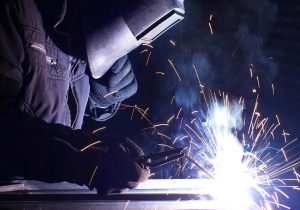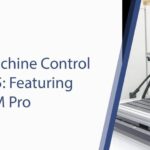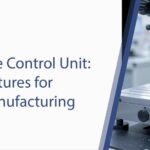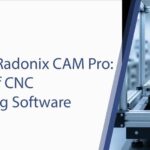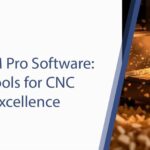Understanding Different Welding Methods and Technologies: A Practical Guide
Welding is the backbone of modern fabrication. From pressure pipelines and ship hulls to aerospace structures and automotive bodies, reliable joints determine a product’s safety, longevity, and cost.
As national industry expands, engineers and technicians in every discipline—not just welding specialists—need a working knowledge of the main welding families, their benefits, and their limitations.
This guide explains the fundamentals, compares common processes, and offers selection pointers so you can evaluate weld quality and specify the right method for your application.
Welding Fundamentals
Most industrial welding falls into two umbrellas:
- Fusion welding — base metals are melted to form a common pool (with or without filler) that solidifies into the joint.
- Solid‑state/pressure welding — metals are joined below their melting point using pressure, plastic deformation, diffusion, or controlled heat.
Joint preparation (edge geometry, fit‑up, cleanliness), filler/wire selection, shielding (gas or flux), and thermal management (preheat/interpass/post‑weld heat treatment) are decisive for strength and defect control regardless of process.
A) Fusion Welding Methods
Fusion methods melt the base material at the joint. They are flexible and widely available.
1) Arc Welding (AW)
An electric arc provides intense localized heat to create a molten pool. Major sub‑processes include:
- SMAW (Shielded Metal Arc / “Stick”) — versatile, portable; ideal for site work and repairs. Slower deposition and more cleanup.
- GMAW (MIG/MAG) — wire‑fed, high productivity, easy to automate; common in automotive and general fabrication.
- GTAW (TIG) — precise arc control and clean welds; preferred for thin sections, stainless, and reactive alloys (Ti, Ni). Lower deposition rate.
- FCAW (Flux‑Cored Arc) — high deposition with flux‑cored wire; good outdoors and on thicker plate.
- SAW (Submerged Arc) — very high deposition and deep penetration on heavy sections; nearly spatter‑free under granular flux.
- PAW (Plasma Arc) — constricted arc for narrow, deep beads and keyhole capability on thin to medium sections.
Where it shines: broad material coverage, proven codes/standards, easy access to equipment and skills.
Watch‑outs: spatter, distortion, and fumes must be managed; heat‑affected zone (HAZ) properties depend on procedure discipline.
2) Oxy‑Fuel Welding (OFW)
Combustion of fuel gas (commonly acetylene) with oxygen heats the joint to create a molten pool.
- Strengths: simple equipment, great for thin steels, brazing, and maintenance work; no electrical power required.
- Considerations: slower, more heat input than arc; demanding on operator skill and fit‑up; cylinder handling and ventilation are critical for safety.
3) Laser Beam Welding (LBW)
A focused laser (fiber, disk, or CO₂) produces very high energy density for narrow, deep welds with small HAZ.
- Benefits: precision, low distortion, high travel speeds, excellent for thin sheet and dissimilar metals; easy to automate and integrate with vision.
- Applications: battery tabs and busbars, EV body‑in‑white, medical devices, electronics, fine mechanics.
- Limits: tight fit‑up and positioning required; reflective alloys (Cu, Al) need wavelength/power strategy; higher capex.
4) Electron Beam Welding (EBW)
An electron beam in a vacuum transfers kinetic energy to the workpiece for extreme penetration and weld purity.
- Benefits: deepest keyholes, narrowest HAZ, exceptional metallurgical quality; superb for thick sections and high‑value alloys.
- Considerations: requires vacuum chamber and X‑ray shielding, strict fixturing, and significant capital—best for specialty/high‑value parts.
B) Solid‑State and Pressure‑Assisted Methods
These processes join metals below melting temperature using pressure, frictional heat, or high‑frequency vibration. (Some standards classify resistance methods within fusion; here we group them as pressure‑dominated joining.)
Friction Welding (FRW) & Friction Stir Welding (FSW)
- FRW: one part rotates against another under axial force to forge the interface; common for shafts and dissimilar round bars.
- FSW: a rotating, shouldered tool mechanically stirs the joint below, melting—excellent for aluminum panels, rail cars, aerospace ribs.
Pros: no filler, minimal distortion, excellent mechanical properties.
Cons: robust fixturing & access required; joint geometry constraints.
Ultrasonic Welding (USW)
High‑frequency vibration under pressure creates solid‑state bonds—used for thin metals (battery foils) and thermoplastics.
Pros: very fast, low heat, ideal for delicate assemblies.
Cons: limited to thin sections and lap joints.
Diffusion Bonding
Clean surfaces pressed together at elevated temperature (below melting) for extended time, often in vacuum/inert gas.
Use‑cases: aerospace honeycomb, titanium structures, heat exchangers.
Trade‑offs: long cycle times, stringent surface prep.
Explosive Welding (EXW)
A controlled detonation drives plates together at high velocity to create a metallurgical bond.
Use‑cases: clad plates (Ti/steel, Cu/Al) for corrosion/thermal applications.
Trade‑offs: specialized facilities and safety protocols.
Roll Welding
Pressure from rolling mills bonds stacked sheets/foils; often followed by heat treatment.
Use‑cases: laminated metals, bimetallic strips.
Resistance Welding (Spot, Seam, Projection)
High current through clamped sheets generates heat at the interface to forge a nugget.
Strengths: extremely fast, easily automated, ideal for automotive body‑in‑white and appliances.
Limits: best for sheet materials; electrode wear and access must be managed.
Selecting a Welding Process: Quick Decision Guide
- Material & thickness: aluminum panels → FSW/LBW; thick steel → SAW/EBW; mixed thin sheets → LBW/RSW.
- Joint type & access: butt vs lap, single‑side vs double‑side, in‑chamber (EBW) vs on‑line (RSW/LBW).
- Throughput & automation: high volumes favor GMAW robots, RSW cells, or LBW lines.
- Distortion & aesthetics: LBW/GTAW minimizes HAZ; SAW prioritizes deposition on heavy plate.
- Dissimilar metals: LBW, FRW/FSW, diffusion, and explosive cladding excel.
Tip: Always validate with a WPS/PQR (Welding Procedure Specification/Procedure Qualification Record) and pre‑production samples before scaling.
Quality & Inspection Essentials
Regardless of process, quality hinges on:
- Procedure control: WPS parameters (current, voltage, speed, heat input), preheat/interpass limits.
- Operator qualification: per relevant codes (e.g., ISO/ASME/AWS).
- NDT methods: visual (VT), dye penetrant (PT), magnetic particle (MT), ultrasonic (UT), radiographic (RT); for critical parts, CT or phased array UT.
- Metallurgy: manage HAZ hardness, residual stress, and susceptibility to cracking via heat input, filler choice, and PWHT.
Safety & Environmental Considerations
- Fume extraction & PPE: mandatory for arc and resistance welding; select correct respirators for hex‑chrome or manganese exposure.
- Gas and cylinder safety: leak checks, flashback arrestors, proper storage.
- Laser/EBW safety: Class‑1 enclosure, interlocks, eyewear, and X‑ray shielding for EBW.
- Fire prevention: dedicated hot‑work permits, housekeeping, and spark containment.
Automation & Digital Trends
Modern welding cells leverage:
- Robotics and cobots for repeatability and speed.
- Seam tracking & vision to correct for fit‑up variation in real time.
- Through‑arc sensing and adaptive control to stabilize penetration.
- Digital twins to simulate heat input/distortion and optimize fixturing offline.
Radonix integrates CNC and motion control with robotic welding cells, enabling precise path control, real‑time monitoring, and secure connectivity to MES/ERP for complete traceability.
